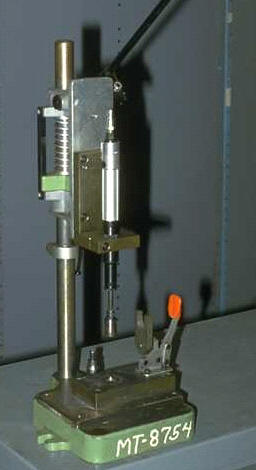 |
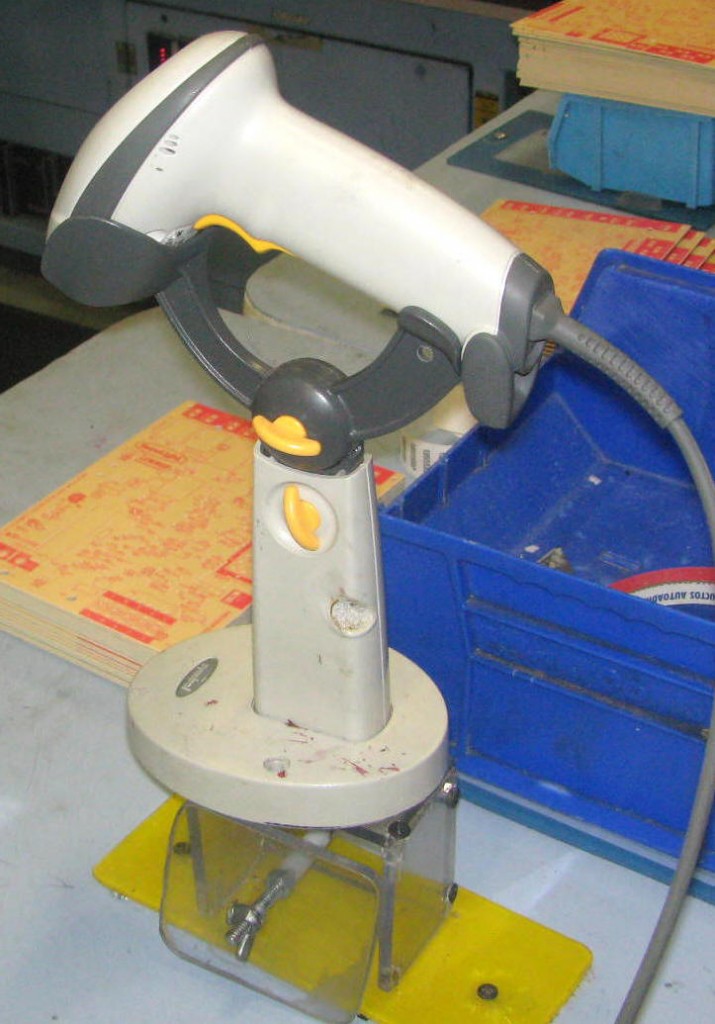 |
| Bench mounted tools | |
Background
This strategy has to do with mounting tools that are typically held in the hand. Mounting provides several potential advantages, depending upon the situation:
- Reduce exertion: Mounting heavy tools eliminates the need to hold the tool. Mounting one handle of a squeeze tool (pliers, crimpers, etc.) cuts the exertion needed to close the tool.
- Reduce motions: Mounting keeps the tool in position, eliminating the need to pick it up and put down for each use.
- Reduce fatigue: Mounting can eliminate the need to hold a tool for long periods of time (i.e., static load), even if the tool is lightweight.
Mounting is a different concept from that of a counterbalance, where the tool moves and is still manipulated by the hand. In this case, the tool is rigidly mounted.
Ideas and Options
Standard mounts
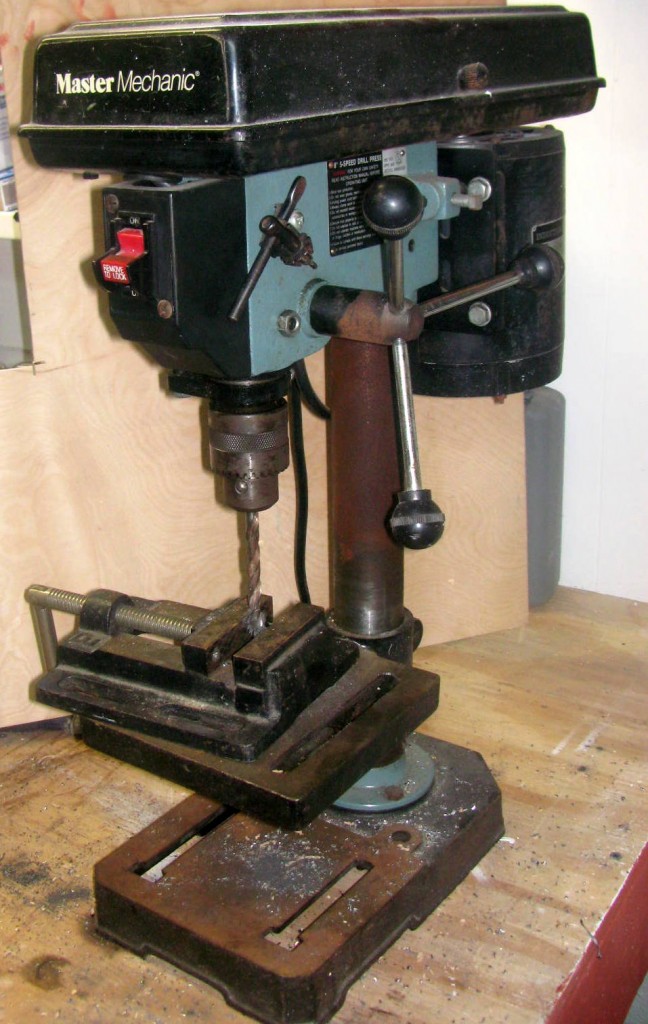 |
| Drill press |
A drill press is an example of a mounted tool, in this case a very commonplace one. Not everything can be placed in a drill press, but where it works, it works well: no need to pick up the heavy tool, usually faster than holding a drill by hand, more accurate, etc.
Undoubtedly there are tasks in many workplaces that would be easier to perform if the tool were mounted.
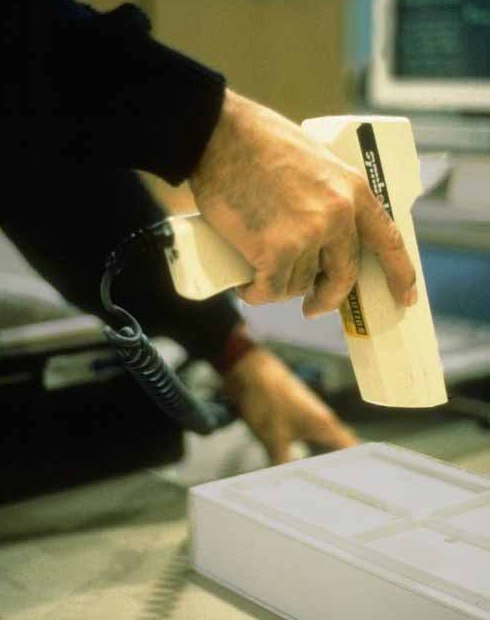 |
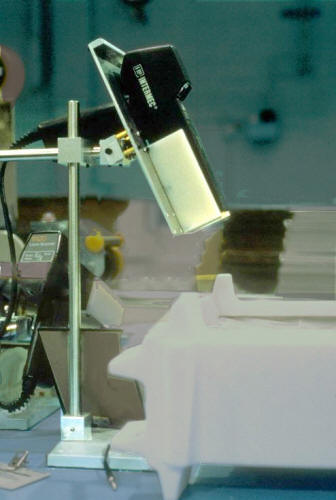 |
| Handheld | Mounted |
Mounted scanners are also common, in this case serving to eliminate many unnecessary motions created by having to pick up and put down the scanner. As with a drill press, a mounted scanner doesn’t fit every situation. However, there are many cases where it is simply easier to bring the item to the scanner rather than the reverse.
Heavy tools
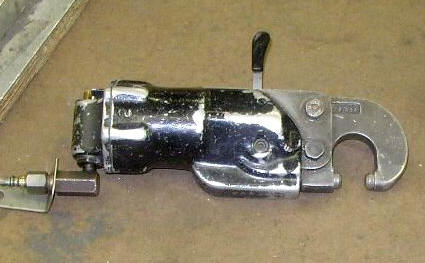 |
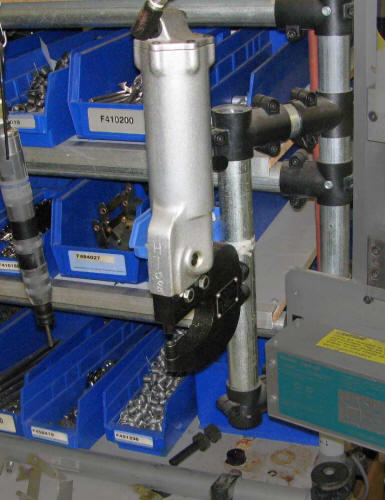 |
 |
| Rivet squeezer: Hard to hold | Bench mount | Floor pedestal |
Mounts are especially helpful for heavy and hard-to-hold tools, such as the rivet squeezers shown above. As with many tools, they can be mounted at a workbench or placed on a floor pedestal.
Note that a counterbalance can also be used, particular for working on large items that require the tool to be movable. But many smaller items are easier to hold and maneuver than the tool, so then it is typically better to mount the tool.
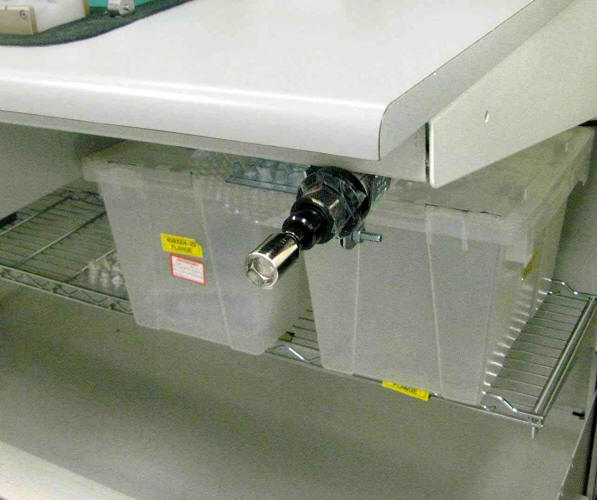 |
| Power wrench mounted under bench |
The example above shows a power wrench mounded under a workstation. Note that torque reactionmay be an issue depending upon circumstances like the amount of torque and the size of the item being worked on.
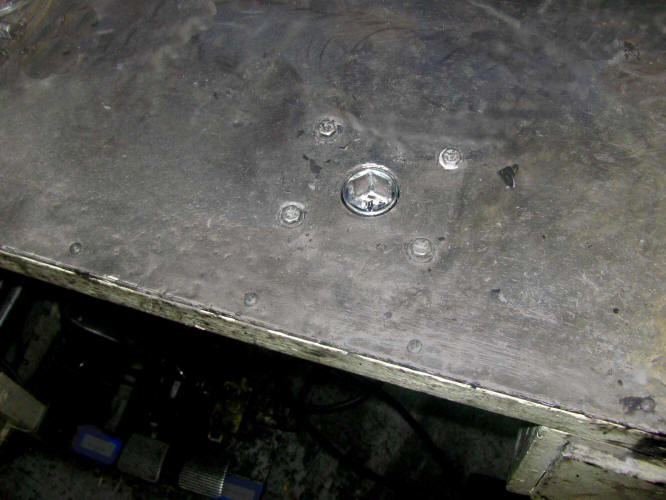 |
 |
| Workbench surface with recessed impact wrench | View of same impact wrench from underneath |
This example also shows a mounted wrench. In this case, it is a pistol grip tool mounted under the bench so that the wrench socked is accessible from the work surface, operated with a foot pedal.
Squeeze tools
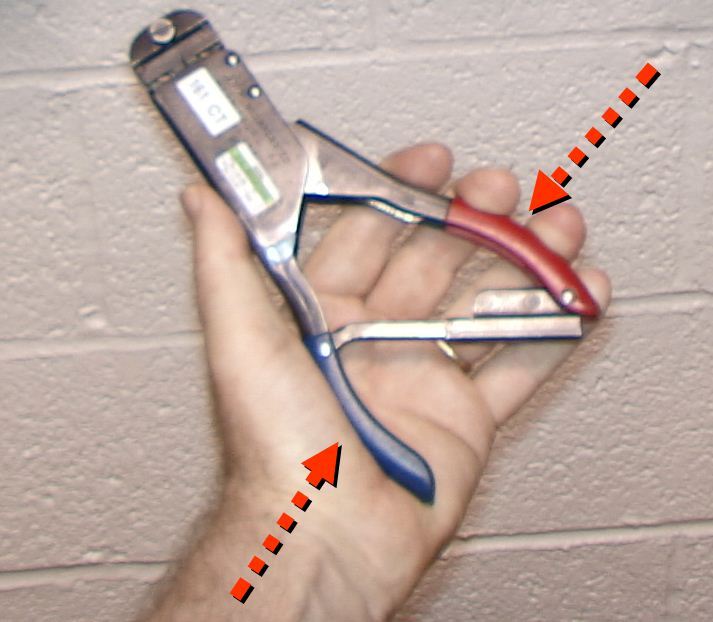 |
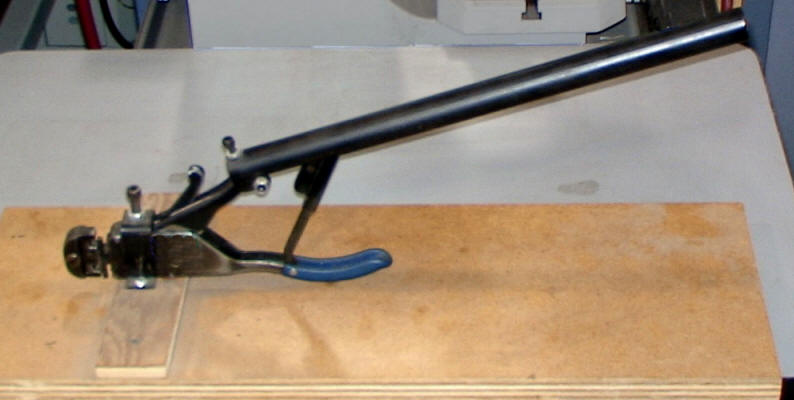 |
| Before: Crimper | After: Mounted |
Squeeze tools provide another example where mounting can work especially well. Squeeze tools can create considerable strain on the hand, in part because they actually double the exertion needed to do the job (for every action, there is an equal and opposite reaction).
Thus, by mounting and securing one of the handles, the effort needed is cut in half. Furthermore, it is often easy to add a lever to the free handle, even by simply using a small length of PVC pipe.
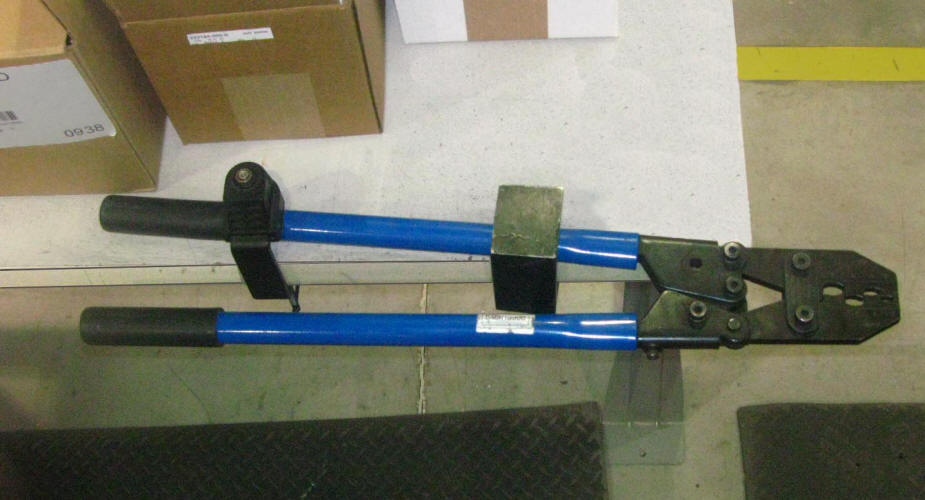 |
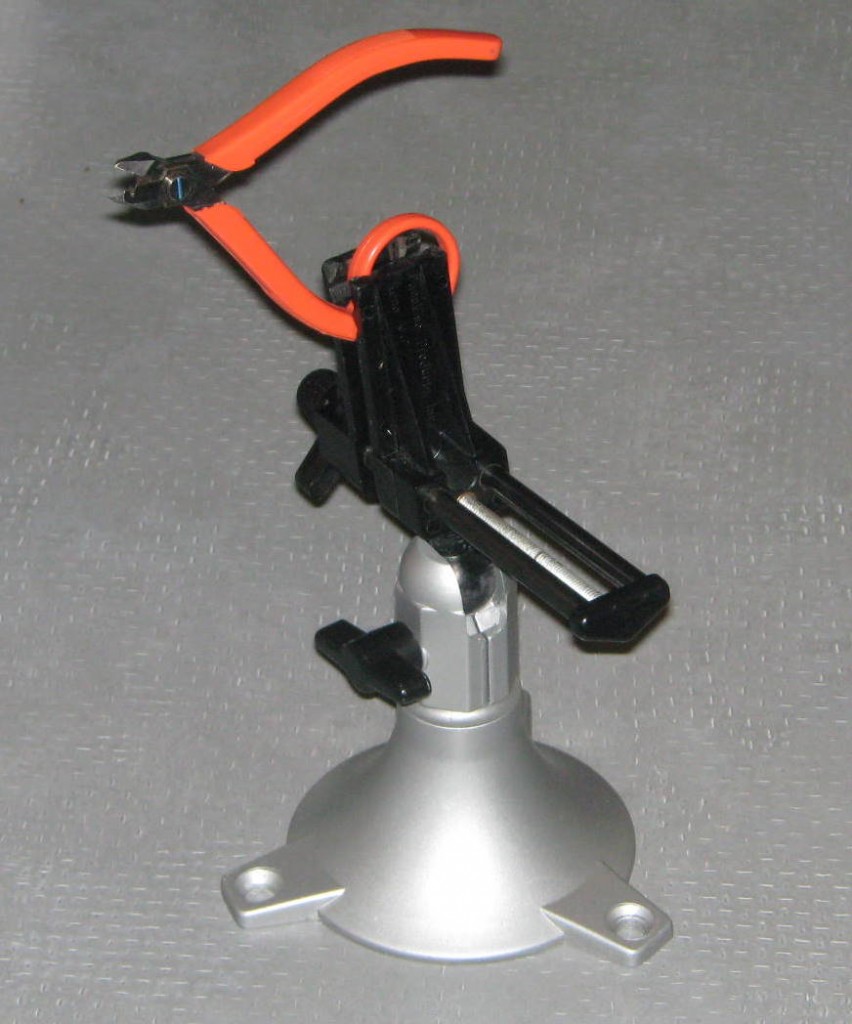 |
| Large crimper mounted on bench edge | Small cutter in portable vise |
With creativity, many styles and sizes of tools can be mounted. Simple benchtop vises provide an especially easy way to create a tool mount, even if temporary.
 |
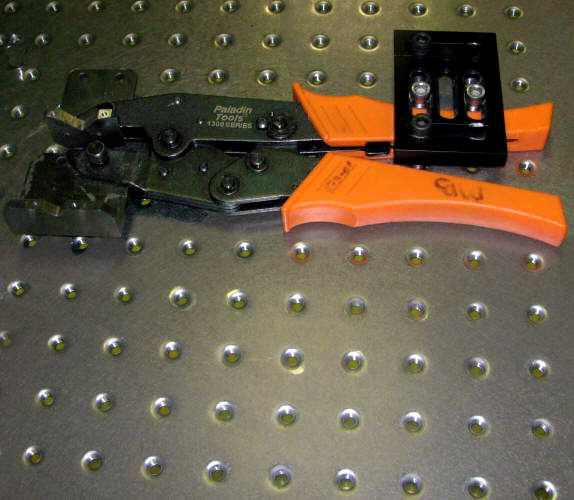 |
| Work surface with tapped screw holes for mounting | |
This unusual steel work surface has screw holes to facilitate flexible mounting of tools and fixtures. See Workstations: Surface material
